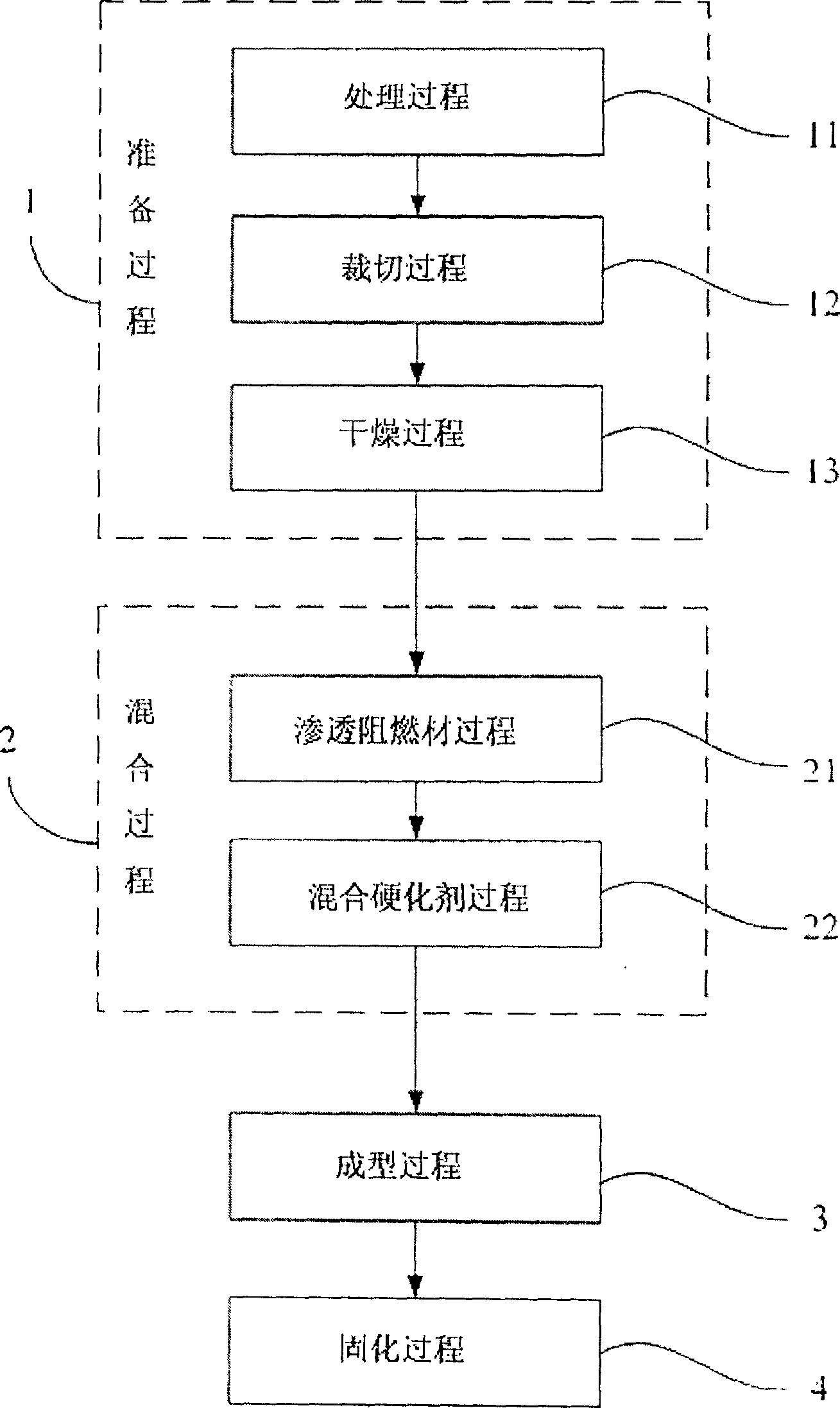Method of mineralizing plant fiber and its applications
A mineralization and plant technology, applied in the mineralization of plant silk and its application field, can solve the problems of non-benevolent design, attenuation, not yet practical, mass production, etc.
- Summary
- Abstract
- Description
- Claims
- Application Information
AI Technical Summary
Problems solved by technology
Method used
Image
Examples
Embodiment example
[0043] According to an actual implementation case of the present invention, the method and application thereof of plant silk mineralization are described in detail:
[0044] Use waste miscellaneous wood as plant material, cut it into thin slices with a thickness of about 0.2mm along with the periphery of waste miscellaneous wood, then cut into plant silk with a width of about 2.0mm and a length of about 35cm, and then dry the plant silk to a water content of 14 %about;
[0045] After diluting the flame-retardant material or flame-retardant material with water, put the dried plant silk, so that the flame-retardant material or flame-retardant material penetrates into the interior of the plant silk; then take out the plant silk, mix the flame-retardant material with the hardener, and the The hardening agent is a mixture of light calcium carbonate, calcium chloride, magnesium oxide, magnesium chloride and expanded perlite (volume ratio is 2:1:2:1:2); the hardening agent, the flame...
PUM
 Login to View More
Login to View More Abstract
Description
Claims
Application Information
 Login to View More
Login to View More - R&D
- Intellectual Property
- Life Sciences
- Materials
- Tech Scout
- Unparalleled Data Quality
- Higher Quality Content
- 60% Fewer Hallucinations
Browse by: Latest US Patents, China's latest patents, Technical Efficacy Thesaurus, Application Domain, Technology Topic, Popular Technical Reports.
© 2025 PatSnap. All rights reserved.Legal|Privacy policy|Modern Slavery Act Transparency Statement|Sitemap|About US| Contact US: help@patsnap.com

